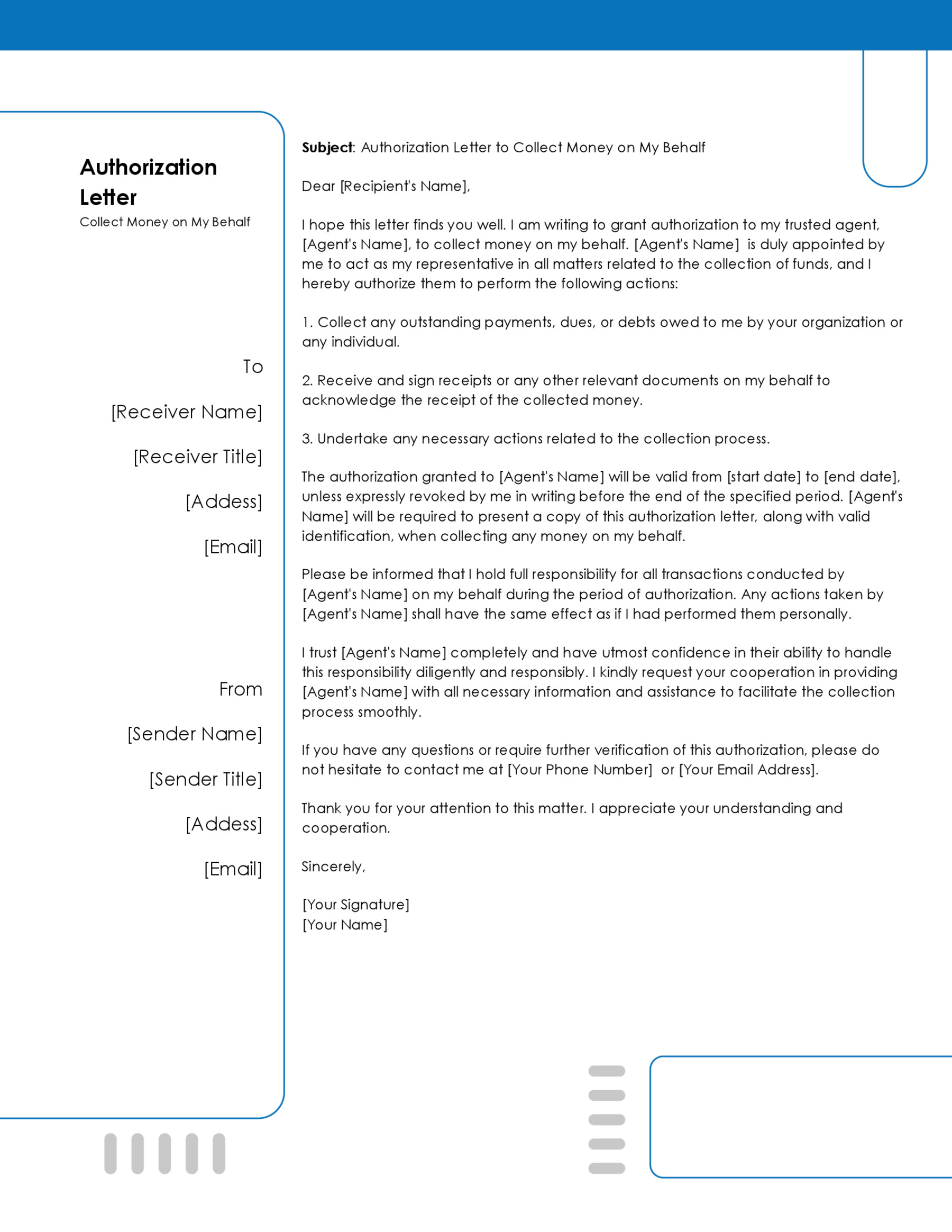Anyone can claim to reside within a particular state or neighborhood. However, a written declaration biding by the state’s law makes one person’s claims more valid than others. This written declaration is called the “Proof of Residency Letter”. It comprises personal information about the claimant with supporting documents that certify where they live.
Although claimants do not get to write this letter themselves, someone has to write it on their behalf. And, it has to be someone who has the knowledge and facts to prove that the claimant lives at the address they claim to live. It is a process that is synonymous with providing a witness. This article will throw light on writing such a letter, how to prove it, and the factors to consider before beginning the process.
What is It?
It is a document that serves as a sworn testimony solely to prove that a person resides at a particular home address.
It is a letter written and signed by someone who acknowledges a mailing address on behalf of another person; it contains details such as legal name and relevant dates.
It can be written by a person of authority, landlord, employer, parent, close relative, or roommate. Usually, it is supported by documents and is notarized. A notarized letter is a document that has been certified and signed by a notary public, which cancels any questions concerning authenticity.
When may you need it?
It is usually necessary for official dealings that require a person to prove that they are who they claim to be and that their residential address is legitimate. For example, this document is necessary for seeking unique benefits for residents of a place, obtaining a driver’s license, visa registration, state or national program registration, university or college registration, etc.
The approval or rejection of this letter depends on the accuracy of the information provided. Therefore, ensure to follow all due processes to achieve your goal.
How to Prove?
There are basic yet comprehensive measures you have to take to validate the authenticity of your residential address. This process comprises the three significant steps below:
Write the letter
All that you require to prove your residency is a written letter. This letter can be obtained from a resident, family, or landlord. It must include every necessary detail and be in an appropriate format. It has to be in clear and formal language and should include contact details for further information that may be required.
Attach the required documents
Attaching the required verifiable documents makes your claim hold weight. These verifiable documents are bank statements, utility bills, mortgage statements or contracts, residence permits, voter registration cards, credit card bills, etc. Often a requestor will only demand two out of the documents mentioned earlier. In addition, these supporting documents must bear the same name as your legal name.
Submit
This is the final step of the whole process. Submit the letter and all required supporting documents to the requestor of the proof (organizational or government body). Both letter and the documents will get back to the resident after approval.
Pre Considerations
It is inevitable not to be applying or registering for one thing (such as applying for a visa, registering your child in school, applying for residents benefits, applying for a government job, and others). However, when this time comes, there are early considerations one must consider depending on the exact purpose of the proof, which will get one ahead of the situation.
These pre-considerations include:
Understand requirements carefully
The authority or body requesting the letter may have precise demands concerning the information they want to see in it. These requirements may vary from the demand to provide a notarized or non-notarized letter to include rent fee or not. Make proper findings with the appropriate channel and follow their guidelines.
Collect required documents
Once you have an idea of the documents required with the letter, get them ready for use. Ensure you keep personal copies. These documents should be authentic and carry your legal names in the same format and spelling as this letter.
Ask the landlord
Communicate with your landlord and get consent. During your discussion, get permission to include sensitive information such as their contact information. Notify them if they would have to sign in front of a notary.
Take appointment from notary
Some notaries require appointments, while some do not. Find out if the notary needs you to make an appointment, or you can appear any day you are ready to notarize your letter.
How to Write?
A well-drafted letter must include some vital details and be in an acceptable format. As a resident or landlord writing it, below are formats and steps to assist you in writing:
If you are a resident
Nothing stops you if you see yourself writing it as a resident with the correct information.
Go through the guidelines below:
- Heading of the document: The standard heading is “Affidavit of Residence,” written in a clear and bold font and aligned at the center of the page. The font size of the heading must be a little larger than the body of the text. Again, stay clear of unnecessary punctuations or characters.
- Date: Dating a document gives it meaning and provides insight into the timeline of events. An official document without a date cannot be accepted or considered valid for official purposes. Include an accurate date in an acceptable format. It can be written as February 13, 2022.
- Your name and contact information: The part where you put your name and contact information is significant – at the top left of the letter. Ensure not to misspell your legal name. Crosscheck and verify the contact information you provide. A wrong phone number or e-mail address may hinder the recipient from ever getting in touch when they need to.
- Address the recipient: Address the recipient in the appropriate title and correct name. Write the name and title incomplete form and make no mistake to abbreviate. This is a formal and official document. However, when the recipient is unknown, start with, “To whom it may concern.”
- Declaration statement: A declaration statement is like a solemn oath binding under state law. If the information you provided is false, legal action can come after you.
- Start with your name: Start with your legal name spelled in the complete form. Do not make the mistake of using nicknames or aliases. This is not acceptable in official documents.
- Mention address of residence: Confirm your home address. Write it by including the city, state, and zip code. You can use phrases such as “I make an oath” or “I certify that” to testify that it is your actual address that you have put down.
- Time duration of residency: Confirm how long you’ve been occupying your place of residence or home address. Your claim will be more solid if you support it with dates (MM/DD/YY). Ensure this detail is accurate.
- Mention other residents: Confirm that you have other residents living on the same property and write down their respective names. It will support your claim if you include how long they have been residing at the same address as you.
- Mention the attached documents: Mention each supporting document you will be using to amplify this letter. You can refer to any of them where necessary within text. Keep it brief.
- Take oath: An oath is a solemn promise that what you write is nothing but the absolute truth. Every letter for proof of residency is binding by an oath. So, you must write an oath that all the information provided in this document is accurate. Providing a piece of false information can call for legal action.
- Signoff: A proper signoff is essential to make a lasting impression. Follow it with the closing remark and signature. In the case where you need to notarize the document, delay the signature and date until the day that the notary will be able to bear witness.
- Signatures of resident, landlord, and notary public: As a resident writing the letter, you will need to create a space on the letter for your landlord to sign. Create a separate one for your signature. Lastly, there has to be another one for a notary to sign if it is notarized.
If you are a landlord
Being a landlord puts you in the inevitable position of having to assist a resident with this letter. You will have to follow standard steps to write a good letter for your tenant.
Each of them is explained below for your better understanding below:
- Write the date, your name, and contact information: Provide your full legal name – no aliases or short names are accepted. It is important to date the letter in the appropriate format (February 13, 2022, or MM/DD/YYYY), confirming the time the action was taken. Include your contact information (phone number or e-mail), and crosscheck for misspelling or omission. A mistake can hinder the recipient from contacting you if they have further questions.
- Address the recipient: Start with “To whom it may concern” if the identity of the authority you are writing to is unknown. In an instance that you know the recipient’s identity, write the name in full. Make sure you put it down in the correct spelling.
- Purpose of writing the letter: This part has to be clear and detailed. State that you are writing to acknowledge the address of your tenant. You must state their full legal name and write down the resident’s address. Also, emphasize that you know how long your tenant has been a resident (adding relevant dates is advised).
- Specify the amount of rent: This part requires that you confirm if it is the type of the letter that includes house rent. If it’s so, state the monthly rent. Specify if it includes utility bills and other relevant charges.
- Write a call to action: Mention that you are happy to help and available for any further information required. You must encourage them to call you on the given contact number if they need. The aim is to motivate the recipient to take immediate action.
- Signoff and your signature: You should write a closing statement and sign the letter. However, do not sign it if you plan to bear witness in front of a notary. Because a signature is an expression of consent and intent, it must be added in the notary’s presence.
Template of Proof of Residency Letter
[Date]
[Landlord’s name]
[Street Address]
[City, state, and zip code]
[Phone Number]
Dear [To whom it may concern/ full name of recipient]
My name is [landlord’s name]. I certify that I am the current landlord of [Street Address, City, State, and Zip Code]. This letter is to formally confirm one of my tenant’s residency: [tenant’s name]. He lives with other tenants having names [other residents’ names].
I certify that [full name of resident] is my tenant and has been living here since [full date]. His rent per month is [rent fee].
I am glad to be of help. Contact me at the given contact number for any further information required.
[Closing remarks]
Signature
Sample of Proof of Residency Letter
To Whom It May Concern,
I am writing this letter to verify that Alice Smith resides at 456 Oak Avenue, Apartment 7B, Springfield, IL, 62705. Alice has been living at this address since January 1, 20XX.
Alice Smith is my tenant, and she has maintained a good standing throughout her residency. The apartment is part of a multi-family housing unit that I own and manage. Alice has consistently paid her rent on time and has been a responsible and respectful member of our community.
Please feel free to contact me at (555) 123-4567 or johndoe@email.com should you require any additional information or confirmation regarding Alice Smith’s residency.
Thank you for your attention to this matter.
Sincerely,
John Doe
[Signature, if sending a hard copy]
Key takeaways
This letter serves as a useful example for anyone looking to write a residency verification or tenant reference letter. Here’s why it stands out as a good sample:
- The letter includes specific details like the full name of the tenant (Alice Smith), the exact address, and the duration of residency. This level of detail is crucial for verifying residency.
- The writer identifies himself as the landlord and owner of the property. This establishes his authority to attest to the tenant’s residency and behavior as a tenant.
- The writer notes that the tenant is a good tenant who pays rent on time and is a respectful community member. Such positive remarks are helpful in contexts like loan applications or property rental where character and reliability are important.
- Providing contact information and offering additional assistance or confirmation shows a willingness to support the tenant’s application or need for verification. It makes the letter more helpful and credible.
- The letter ends with a polite “Thank you” and a formal closing, “Sincerely,” followed by the landlord’s name and an indication of a signature. This is standard practice for formal letters and adds a personal touch, especially in a hard copy.
- The letter is concise and to the point, focusing solely on the information necessary for verifying residency. This makes it easy to read and understand.
Free Downloads
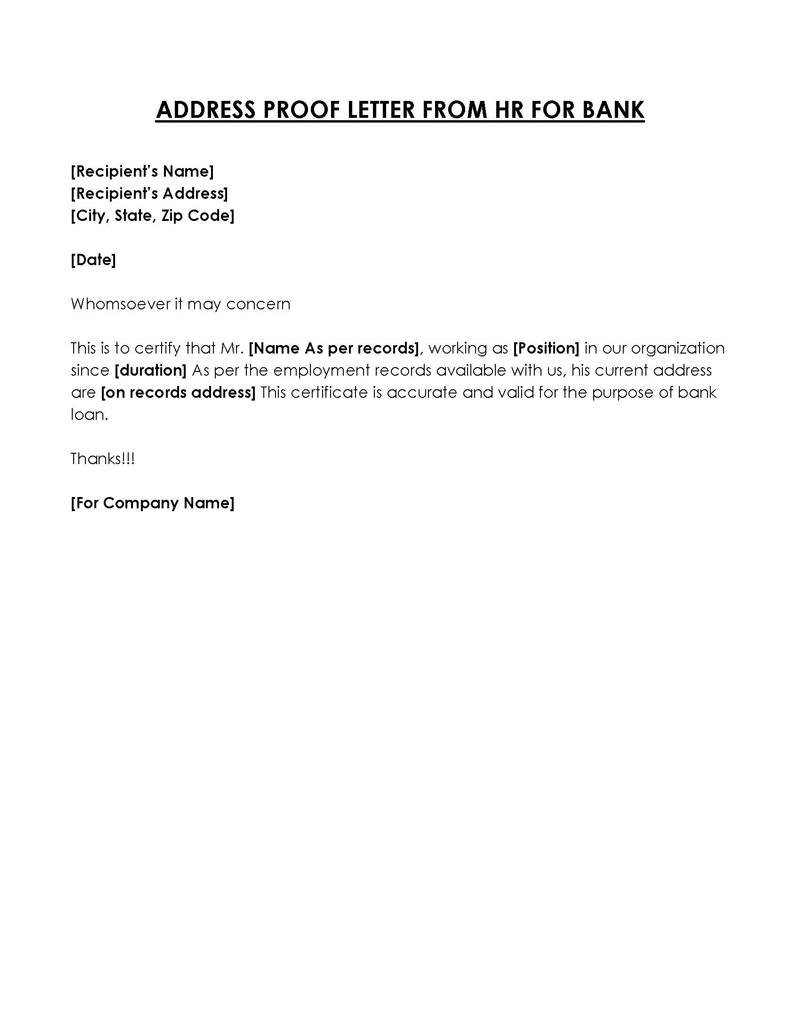
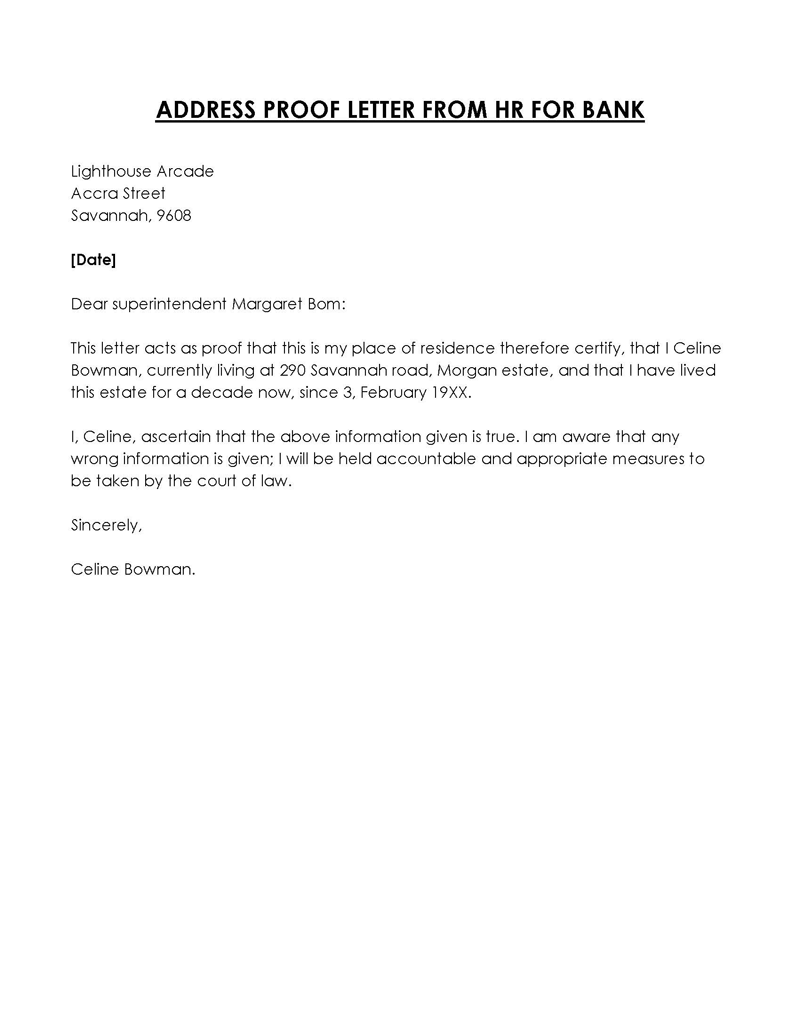
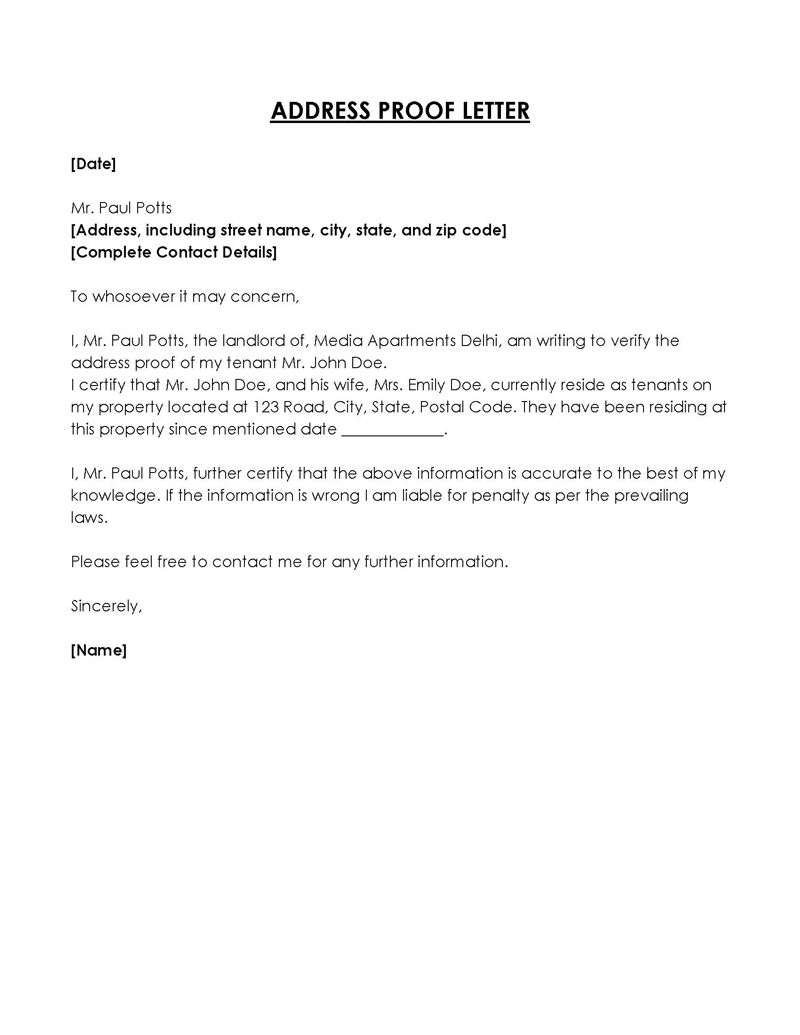
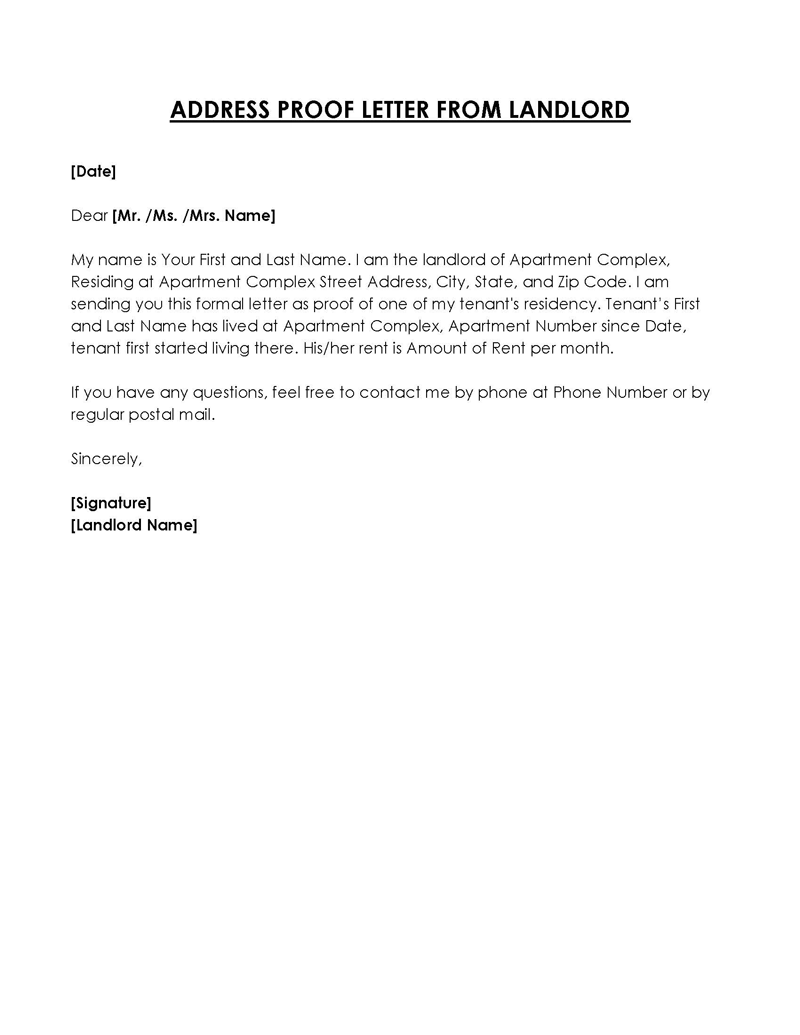
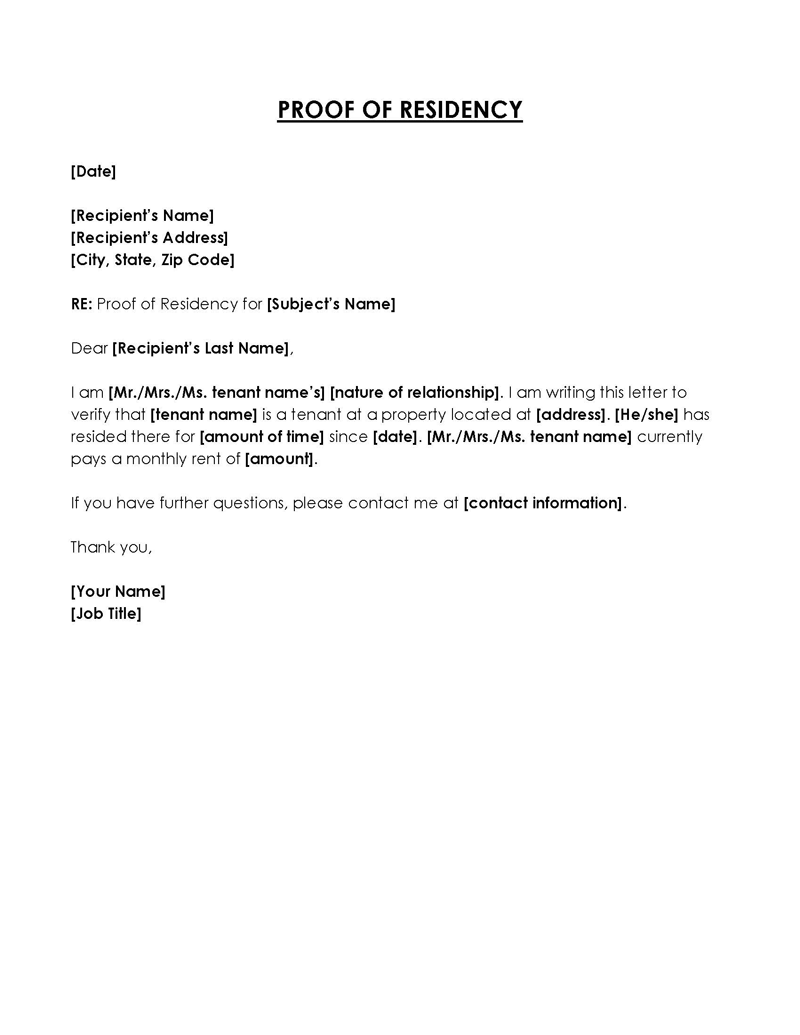
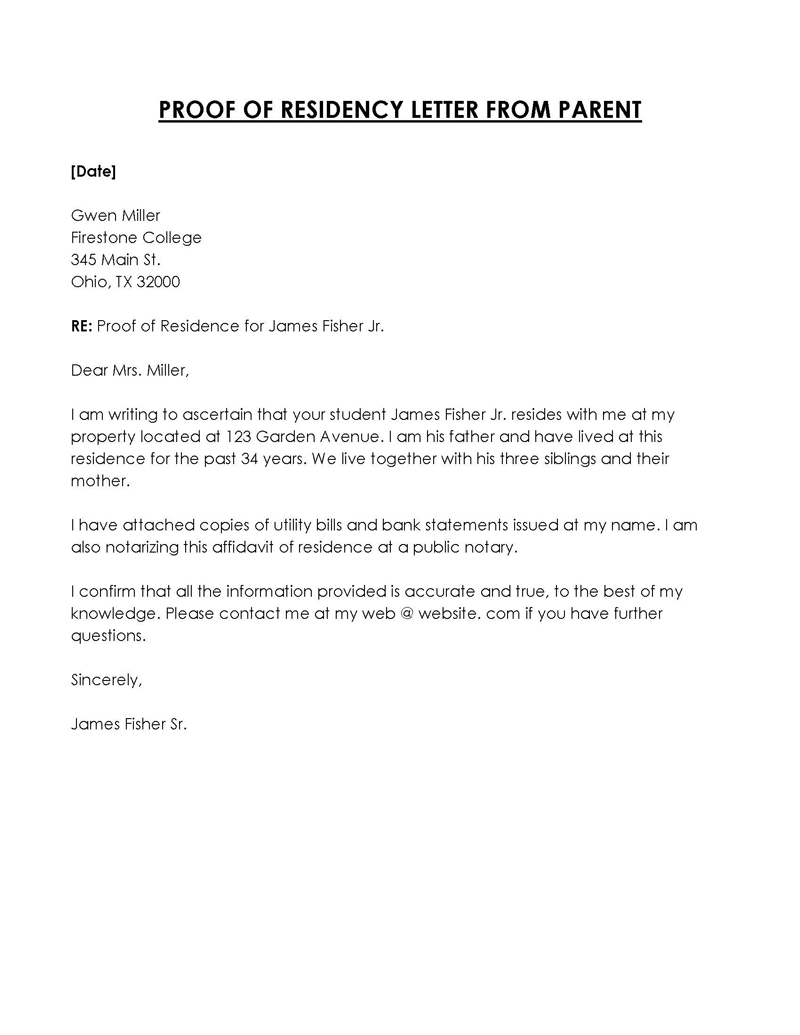
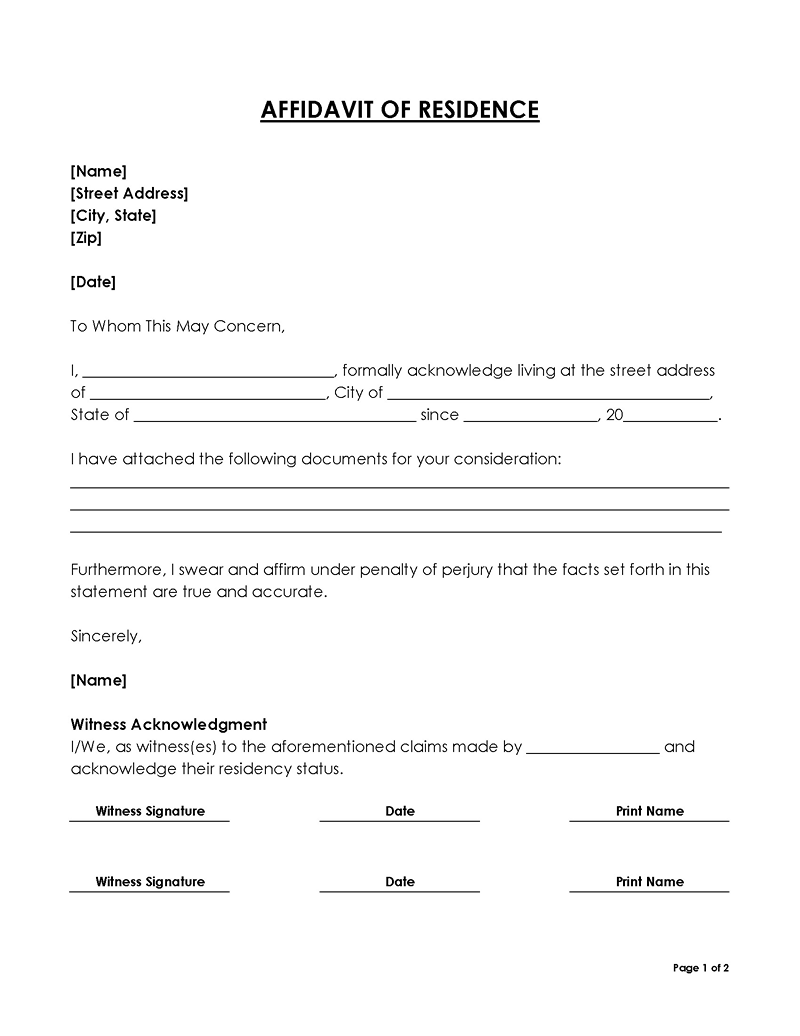
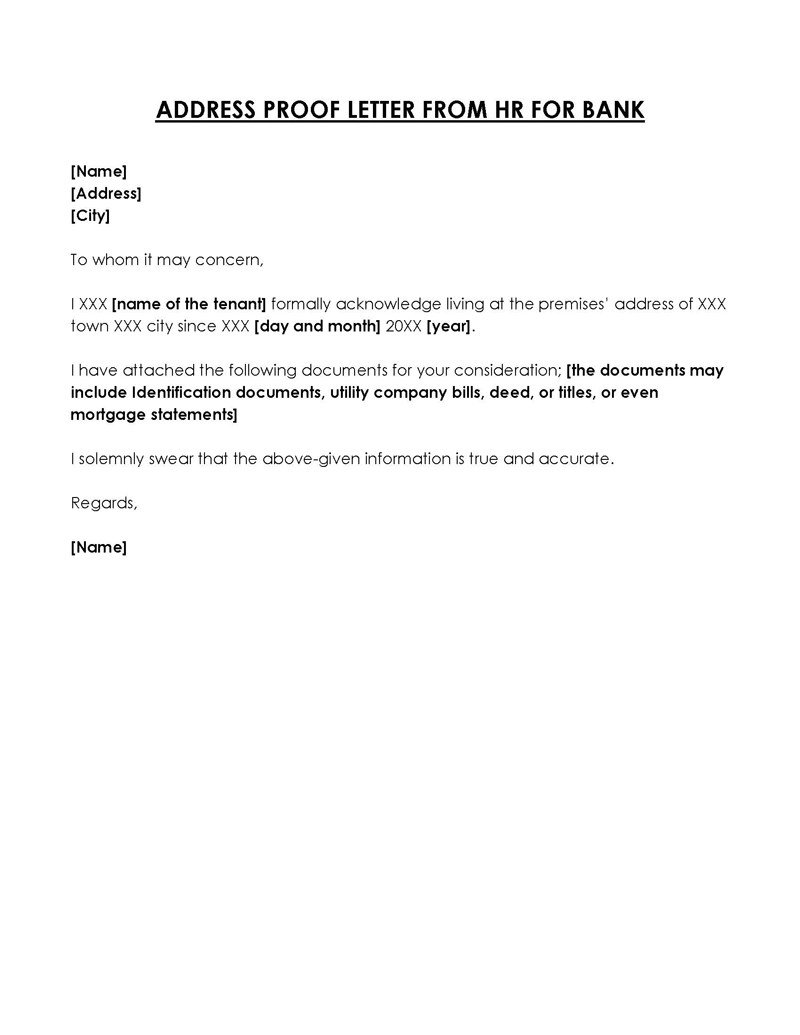
Tips for You
Your letter should have a specific appearance based on the required format. Here are tips and other aspects that you have to put into consideration:
Type the letter
It is advised to use the standard 12-size font, Times New Roman, and set your margins to 1 inch. It is a formal document, so you must type it to have a professional influence on the reader.
Use business letter format
This implies that the letter must carry a tone that implies formal correspondence. A business letter format is divided into dates, addresses, salutations, body, and closing.
Other essential features are:
- The layout should be in block style
- All paragraphs should align on the left side
- Use single-spacing
Proofread
The moment you print a letter, no adjustment is possible. This is why you have to proofread it properly to ensure there are no typos, grammatical errors, or missing information. You can use spelling apps for your assistance.
Conclusion
Writing a perfect letter for proof of residency is not a genius activity or some rocket science. Anyone can write it with the correct information and guidelines (you have it all in this article). The most important thing is that you provide an accurate piece of information.
If you need it, find out the exact requirements the authority wants. Then, confirm that you already have all the required supporting documents and draft the letter following the appropriate guidelines. The template and sample in this article are available for a swift writing experience.











